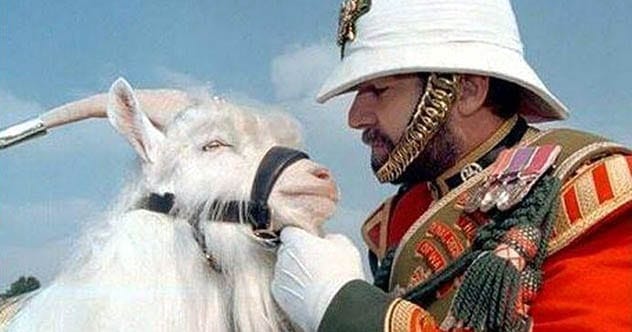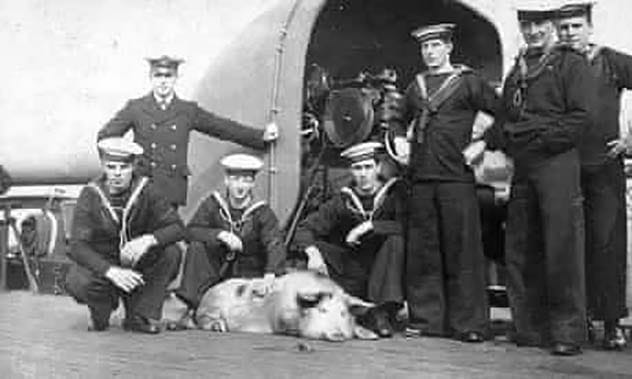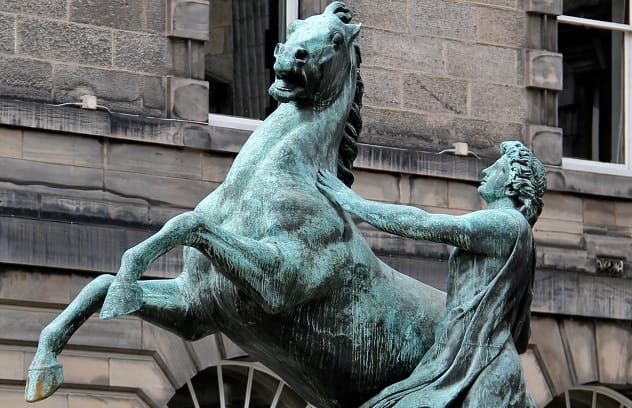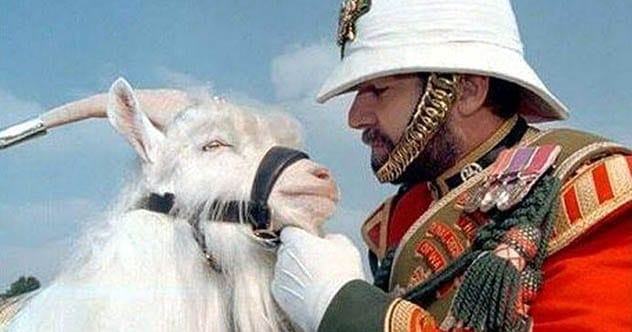Humans often seek recognition, striving for medals and awards. While animals typically have a more relaxed attitude toward accolades, some have demonstrated extraordinary bravery, prompting humans to bestow honors upon them. Here are ten incredible animals that have received high honors for their remarkable contributions.
Magawa
Rats might not be the most esteemed creatures, but Magawa, a giant pouched rat, received a gold medal for “lifesaving bravery and devotion to duty.” Magawa cleared landmines in Cambodia, sniffing out explosives without triggering them, clearing the equivalent of 20 football pitches. Millions of landmines plague Cambodia, causing numerous casualties. Magawa worked for just half an hour each morning, rewarded with treats, while significantly aiding his human handlers. As Magawa retires, other rats are being trained to continue his vital work. [1]
William Windsor

Not all honored animals meet expectations. Since Queen Victoria’s time, the 1st Battalion Royal Welch of the British Army has had a goat mascot. In 2001, they received goat army number 25232301, William “Billy” Windsor, who held the rank of Lance Corporal. Any soldier outranked by Billy had to stand at attention. However, during his first overseas duty, Billy was demoted to Fusilier for misbehaving during a parade. He later regained his rank and retired. Billy also enjoyed perks like two cigarettes to eat and a Guinness drink daily. [2]
Lucca
The Dickin Medal is a high honor for wartime bravery, awarded by the People’s Dispensary for Sick Animals (PDSA). Lucca, a United States Marine Corps dog, was the first American dog to receive this British award. In Afghanistan, Lucca participated in over 400 patrols, sniffing out IEDs and saving lives. During her service, she identified a massive IED, but another detonated, causing severe injuries and the amputation of her front leg. After recovering, Lucca received the Dickin Medal in London. She also received a Purple Heart in an unofficial ceremony. [3]
GI Joe
The first American recipient of the Dickin Medal was GI Joe, a pigeon. During the Allied advance in Italy in World War II, troops captured a village but risked being bombed by their own planes. With radio communication failing, they turned to GI Joe. He flew 20 miles in minutes to deliver a message that stopped the bombing, saving over 100 lives. His Dickin Medal citation honored his outstanding flight, and he enjoyed a long retirement after the war. [4]
Kuno
Dogs often defend their handlers, even at great risk. Kuno, serving with the Royal Navy’s Special Boat Service, tackled an al-Qaida gunman during an assault on an insurgent compound. Pinned down by machine-gun fire, the forces were unable to proceed until Kuno intervened. He suffered gunshots in both back legs but was saved. Kuno became the first British forces dog to receive custom-made prosthetic legs and was awarded the Dickin Medal. The British Defence Secretary credited Kuno with potentially saving British personnel’s lives. [5]
Reckless
The United States Marine Corps only officially ranked one animal: Reckless, a pack horse who rose to the rank of Sergeant during the Korean War. Reckless was intelligent and quickly learned to run for cover when soldiers shouted “Incoming!” She was trained to avoid barbed wire and dodge bullets. She made 51 trips under enemy fire to deliver ammunition and carry wounded soldiers, sustaining shrapnel wounds twice. Reckless retired with numerous honors, including two Purple Hearts. One of her troops believed an angel rode with her. [6]
Sergeant Stubby
Not all military dogs are large; Stubby was a small, mixed-breed dog found at Yale University, where troops trained for World War I. He was smuggled to Europe and allowed to stay after saluting an officer. For 18 months, Stubby served in 17 battles, alerting soldiers to gas attacks and the presence of German soldiers. He also comforted injured soldiers. Stubby was injured but survived the war, meeting Presidents Wilson, Coolidge, and Harding, and leading parades. He was promoted to Sergeant in the US Army. [7]
Tirpitz the Pig

During World War I, pigs on ships served as fresh meat supplies. One such pig was on the German ship SMS Dresden. When the ship was sunk off the Falkland Islands, the pig, later named Tirpitz, swam to the British vessels and was hauled aboard the HMS Glasgow. Named after German Admiral von Tirpitz, she received a mock Iron Cross. Tirpitz became a mascot, but after causing trouble ashore, she was auctioned off to the Red Cross. Her head was later stuffed and displayed in the Imperial War Museum in London. [8]
Bucephalus

Alexander the Great honored his horse, Bucephalus, in a grand manner. Bucephalus was unrideable until a young Alexander tamed him. The horse accompanied Alexander in all his campaigns. When Bucephalus died, Alexander held a massive funeral and founded a city in his honor, Alexandria Bucephalous, east of the Indus River. Alexander’s father declared that Macedonia was too small for him when he saw Alexander riding Bucephalus. [9]
Cher Ami
During World War I, carrier pigeons were vital for communication. Major Charles White Whittlesey and 550 men were pinned down, and their runners failed to get through. When their own side began shelling them, Whittlesey turned to his pigeons. The first two were shot down, but Cher Ami, despite being shot in the breast, delivered the crucial message: “We are along the road parallel to 276.4. Our own artillery is dropping a barrage directly on us. For heavens sake stop it.” The message saved the 194 remaining men. Cher Ami was blinded in one eye and had a leg hanging by a tendon. She received the Croix de Guerre and was sent back to the United States. [10]
From brave rats clearing landmines to loyal horses and pigeons saving lives in wartime, these animals have earned the respect and gratitude of humans, receiving high honors for their extraordinary deeds.
Which of these stories touched you the most? Leave your comment below!










